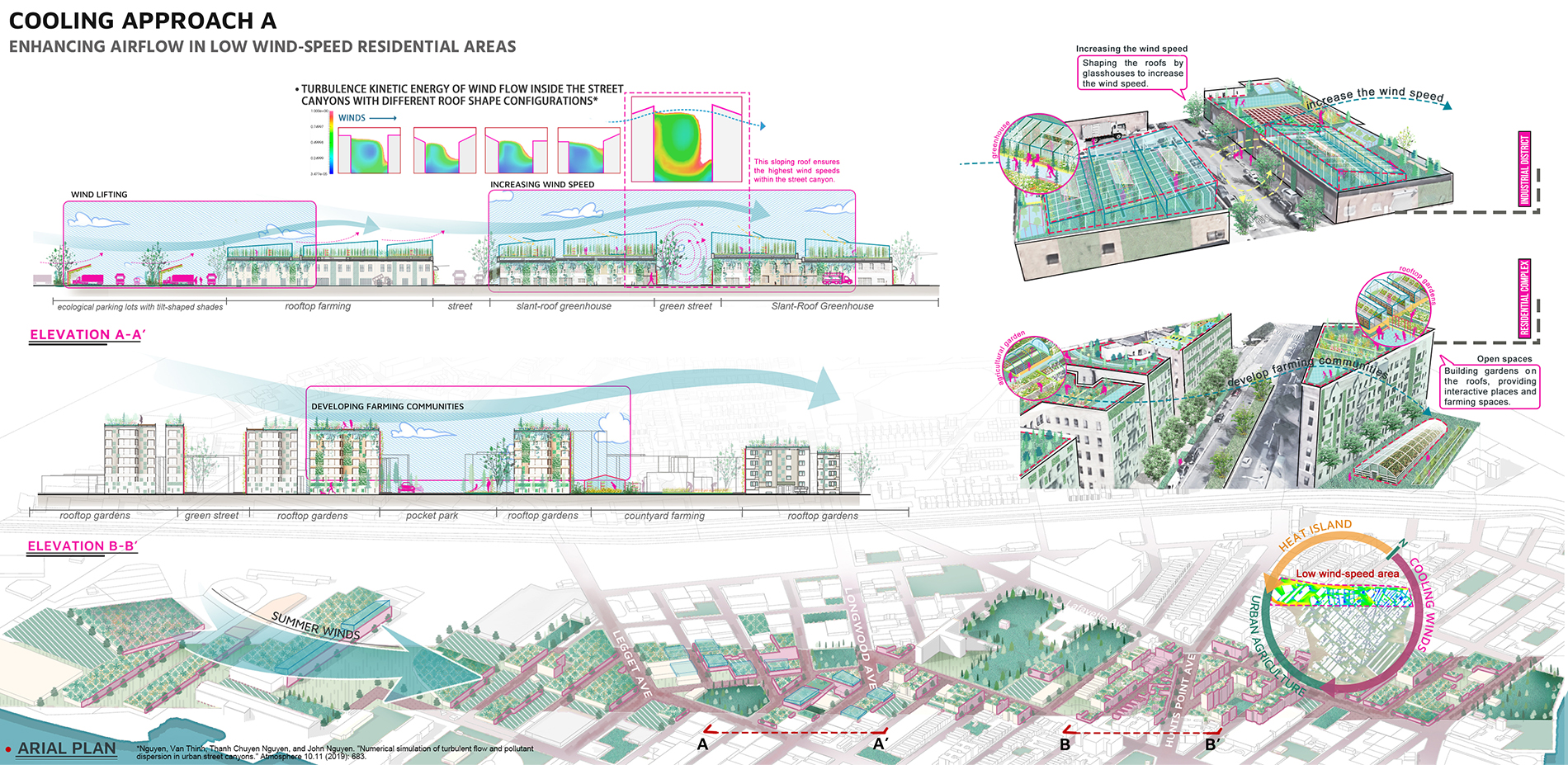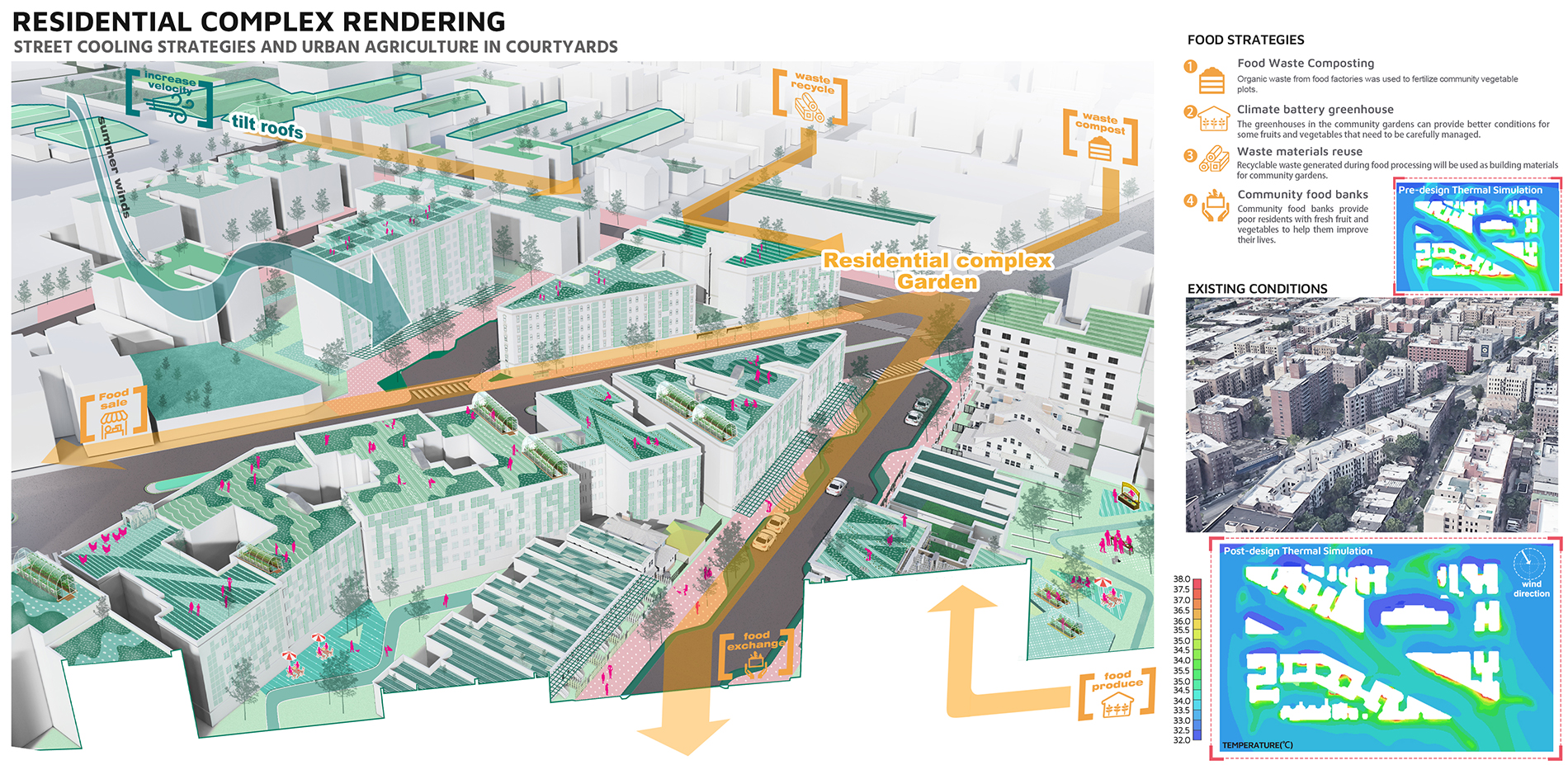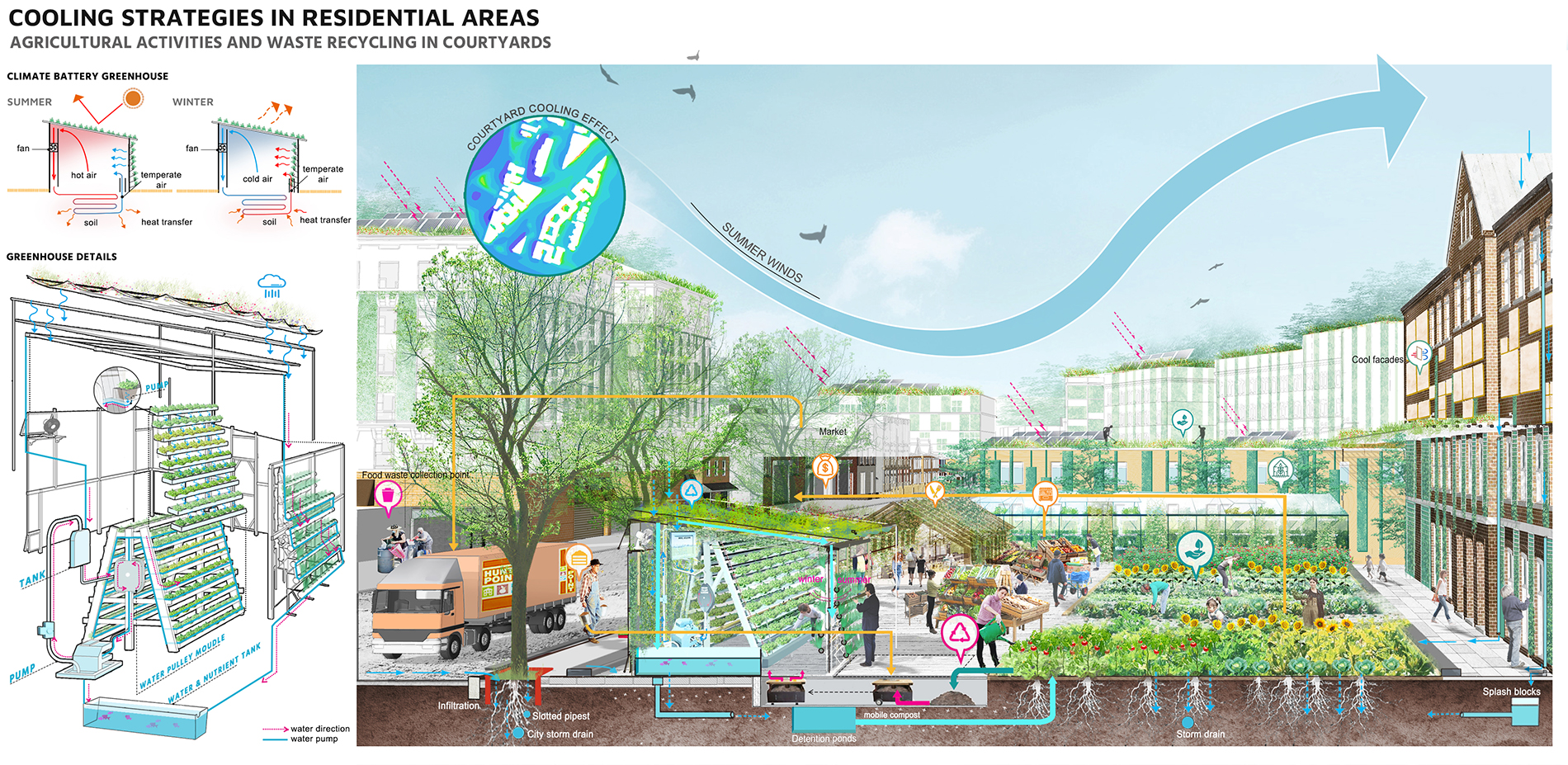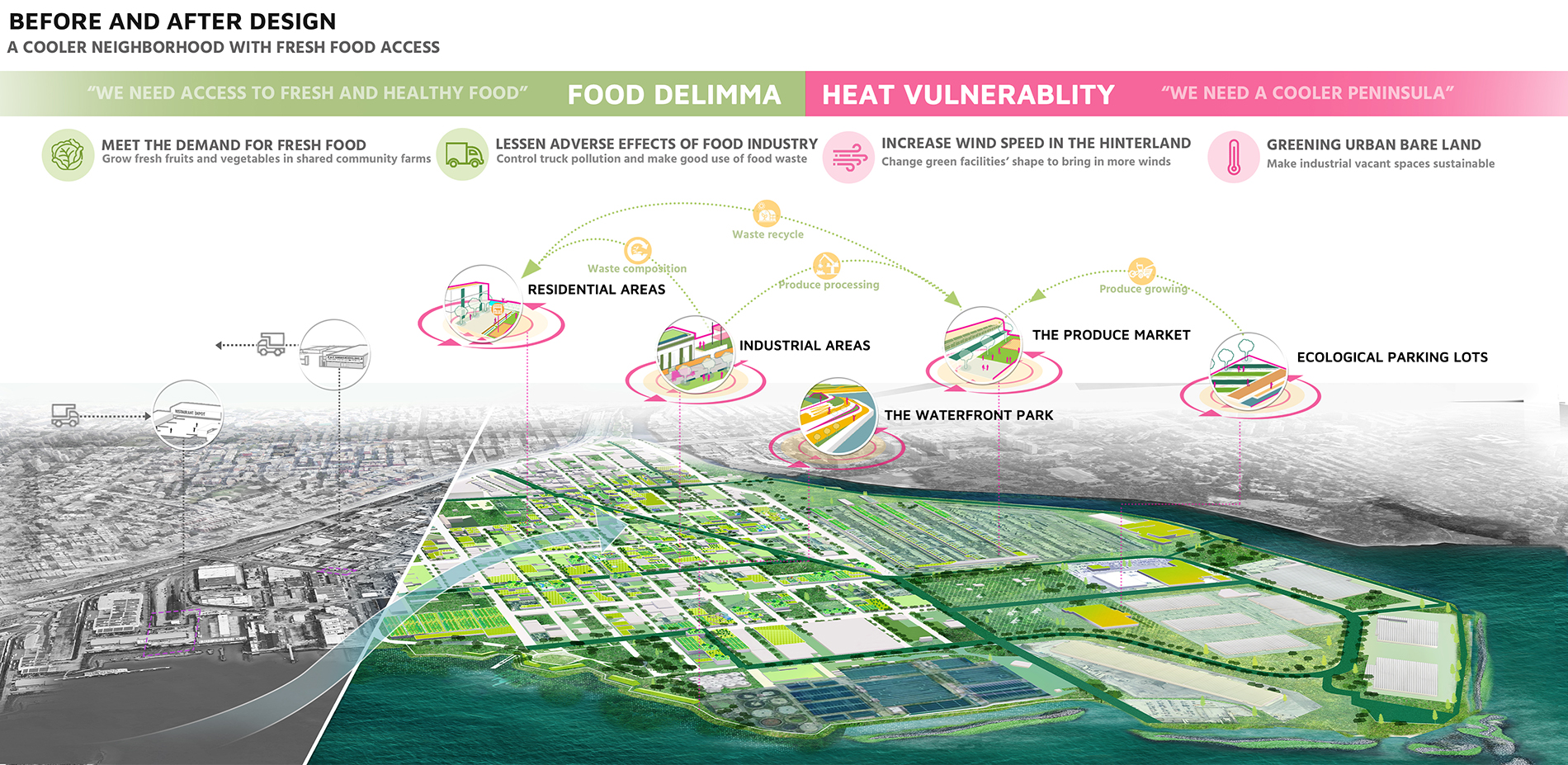Harvest the Wind: Reshaping Urban Heat Island Through Urban Farming
Honor Award
Urban Design
New York City, New York State, United States
Wenxin Sun, Student International ASLA;
Kunyu Wang;
Yi Ma;
Emily Zhai;
Faculty Advisors:
Jun Zhai, ASLA;
Soochow University
Louisiana State Univeristy
The overarching idea of solving two issues, urban island heat and access to fresh food by an urban agricultural intervention, designed to channel cooling breezes, is intriguing. The jury was impressed by the thorough social and climatic analysis that served as the underpinning for the design solution. Beautifully crafted and detailed graphics helped to convey complex systems and ideas in an approachable and educational manner.
- 2023 Awards Jury
Project Statement
Heat is a major weather-related threat in the US, and neighborhoods with a higher proportion of people of color in New York experience more significant heat-exacerbated mortality, highlighting the impact of environmental racism. Hunts Point, one of the most heat-vulnerable neighborhoods in NYC, where almost half the population lives below the poverty line and lacks green spaces, has a 98% people of color population. Despite hosting the world's largest food distribution industrial park, the neighborhood is also a 'food desert', lacking access to fresh produce. This project envisions urban agriculture as a solution to address the urban heat island effect while simultaneously meeting the need for healthy and fresh food for the local community.
Project Narrative
Design concept:
After analyzing the root causes of the heat island effect, we discovered that the peninsula has a unique characteristic of high internal air temperature and high external surface temperature. This is due to the concentration of greenery near residential areas, while the industrial areas lack green spaces and suffer from severe air pollution. As a result, the cool and humid breeze in the summer cannot reach the inland neighborhood, but our proposal will change that. Research has shown that a prevailing wind direction at a 60° angle to the street creates more high-velocity areas on the pedestrian level. To increase wind speeds on the street, we need more cool winds coming from the "right" direction. We've identified and categorized four types of high-temperature areas based on the wind direction and causes and provided a customized solution for each. The food industry, which is currently a major concern for residents on the peninsula, presents an important opportunity for meeting the residents' demand for fresh food. By capitalizing on the recycling opportunities provided by the large produce markets, we can use available green spaces and green roofs to develop urban agriculture. The cooling infrastructure like green walls and riverside dikes will improve flood resilience, and air quality, and provide accessible places for residents. Our proposal aims to create a green framework that seamlessly integrates urban farming and heat island cooling, providing a cool and healthy environment for the community to thrive.
Design details:
APPROACH A:
Approach A primarily targets low wind-speed residential areas within the peninsula. To introduce more cool and humid winds into these areas, we have utilized studies on the relationship between roof shape and wind speed. By modifying the roof shapes of industrial facilities, we elevate the wind using shading structures on factory rooftops and parking lots. Additionally, we optimize the roof forms of street canyons to maximize wind velocity. Ultimately, residents in these residential areas enjoy a refreshing and pleasant living environment.
APPROACH B:
Cooling area B, highlighted as the hottest zone, undergoes a transformative intervention. Existing buildings receive green roofs and walls, while boundary walls on busy roads reduce pollution. Rainwater collection tanks provide irrigation for rooftop agriculture, and bioswales cool and humidify airflow. The area's organic waste is pretreated and composted in vacant spaces, addressing food reprocessing factories' sustainability challenges.
APPROACH C:
To cool down the largest building on the peninsula, the Produce Market, we have designed a greening strategy from the seaside to the market. Firstly, we utilize artificial hills at the seaside to channel the coastal breeze into the peninsula. Then, we implement green roof renovations at the market. Transforming the roof to urban farming, not only cooling the factory below, it can also provide fresh food for residents.
APPROACH D:
Cooling type D, characterized by open spaces and a large parking lot, serves as a natural ventilation pathway. Greening facilities and vegetable plots are strategically placed to optimize wind transmission. A shading trellis is installed parallel to the wind direction to mitigate the parking lot's impact on wind conditions and heat waves. Such a site can provide residents with more employment opportunities and chances for neighborhood interactions.
Plant List:
- Savoy cabbage
- Celery
- Fig Trees
- Grape Vines
- Blue Berry Bushes
- Apple Trees
- Citrus Trees















